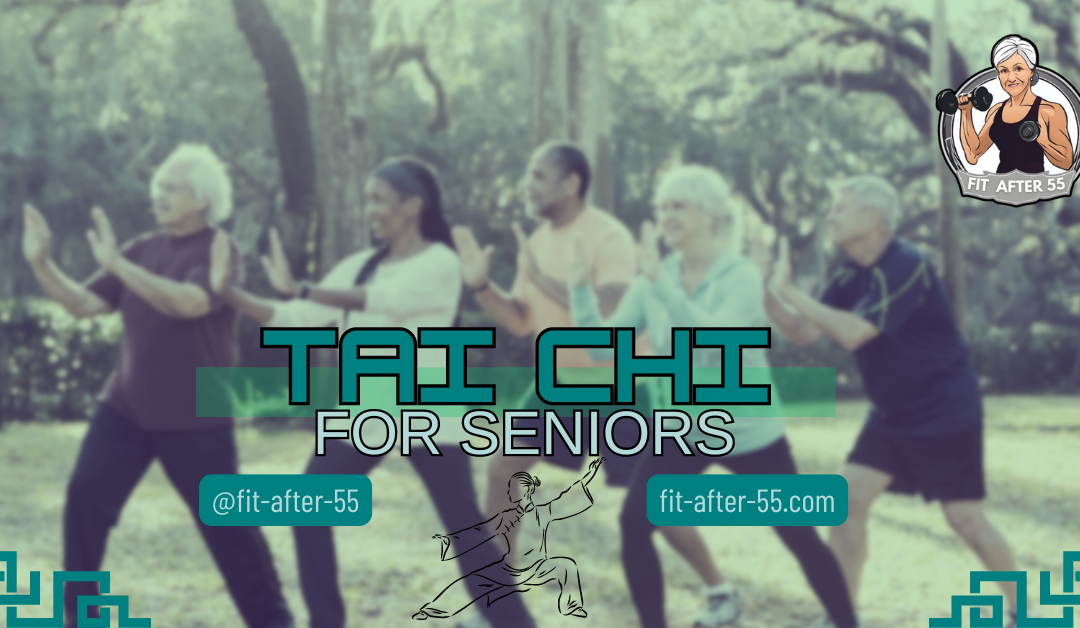The beauty of Tai Chi For Seniors is that it’s gentle and easy on the joints, making it a perfect exercise for older adults. Whether you’re 65 or 85, you can adapt the movements to fit your own pace and abilities. There are no race times to beat or heavy weights to lift. Tai Chi meets you wherever you are, offering a low-impact way to stay active and improve overall health.
Getting older doesn’t mean slowing down; it means moving smarter. Tai Chi is an ancient Chinese practice focused on physical and mental balance. Originating from martial arts, it involves a series of slow, deliberate movements and postures that flow seamlessly into one another. This practice is designed to keep your body agile and your mind sharp. Let’s dive deeper.
Graceful Aging: The Benefits of Tai Chi For Seniors
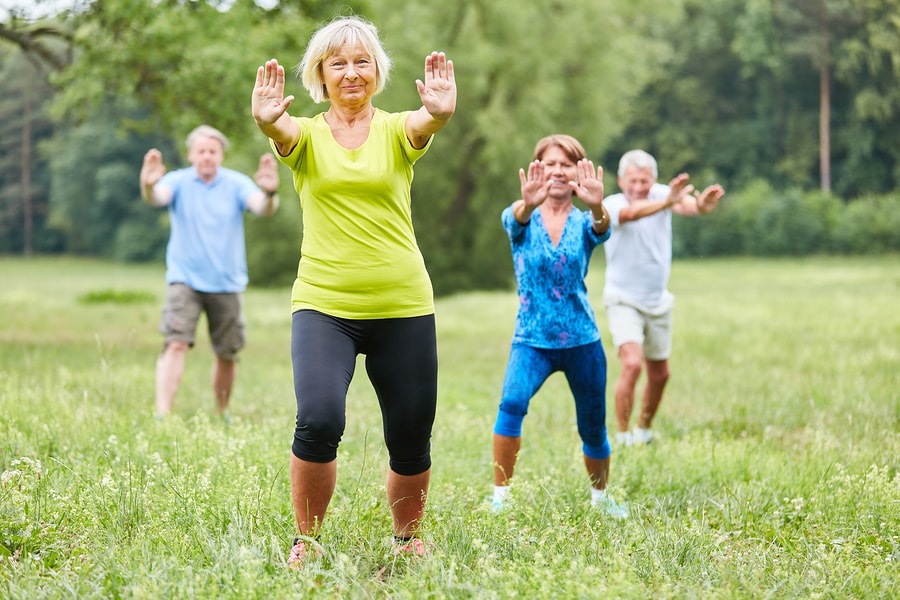
Tai Chi is known for enhancing balance, crucial for preventing falls—a common concern for older adults. It also improves flexibility, reduces stress, and boosts cardiovascular health. Imagine feeling steadier on your feet, more relaxed, and having a healthier heart by moving gracefully. Sounds like a win-win, right? Beyond physical benefits, Tai Chi serves as a moving meditation. It focuses on deep breathing and mindfulness, helping to reduce stress and promote a sense of calm.
This combination of physical and mental health benefits makes Tai Chi a standout choice for seniors. The best part? No special equipment is needed. Wear comfortable clothing and find space, like your living room or backyard. Tai Chi is accessible and easy to integrate into your routine. Feeling stuck in a rut? Tai Chi offers a refreshing change. Whether practiced alone or in a group, it’s a fun and engaging way to invest in your health.
Key Highlights
- Tai Chi is a low-impact exercise that is easy on the joints, making it suitable for older adults. Its movements can be adapted to individual fitness levels and abilities, allowing seniors to practice at their own pace without the need for special equipment.
- One of the primary benefits of Tai Chi is its ability to improve balance, which is crucial for fall prevention in seniors. It also enhances flexibility, reducing stiffness and making everyday movements more comfortable.
- Tai Chi supports heart health by providing a low-impact cardiovascular workout. The flowing movements stimulate blood circulation and can help lower blood pressure, contributing to overall cardiovascular well-being.
- The mindful nature of Tai Chi, combining slow movements with deep breathing, helps alleviate stress and anxiety. This practice also promotes mental clarity and a sense of calm, benefiting emotional and mental health.
- Tai Chi requires no special equipment and can be practiced in various settings, including home or community centers. Joining Tai Chi classes or groups provides a sense of community, support, and motivation, enriching the overall experience.
The Science Behind Tai Chi: Benefits for Senior Health
Tai Chi does wonders for balance, making it a go-to for older adults. Slow, deliberate movements help improve stability and reduce the risk of falls. Consistent practice strengthens leg muscles, enhances coordination, and sharpens the body’s proprioception—essentially, your body’s ability to sense its position in space. It’s like giving your internal GPS a tune-up.
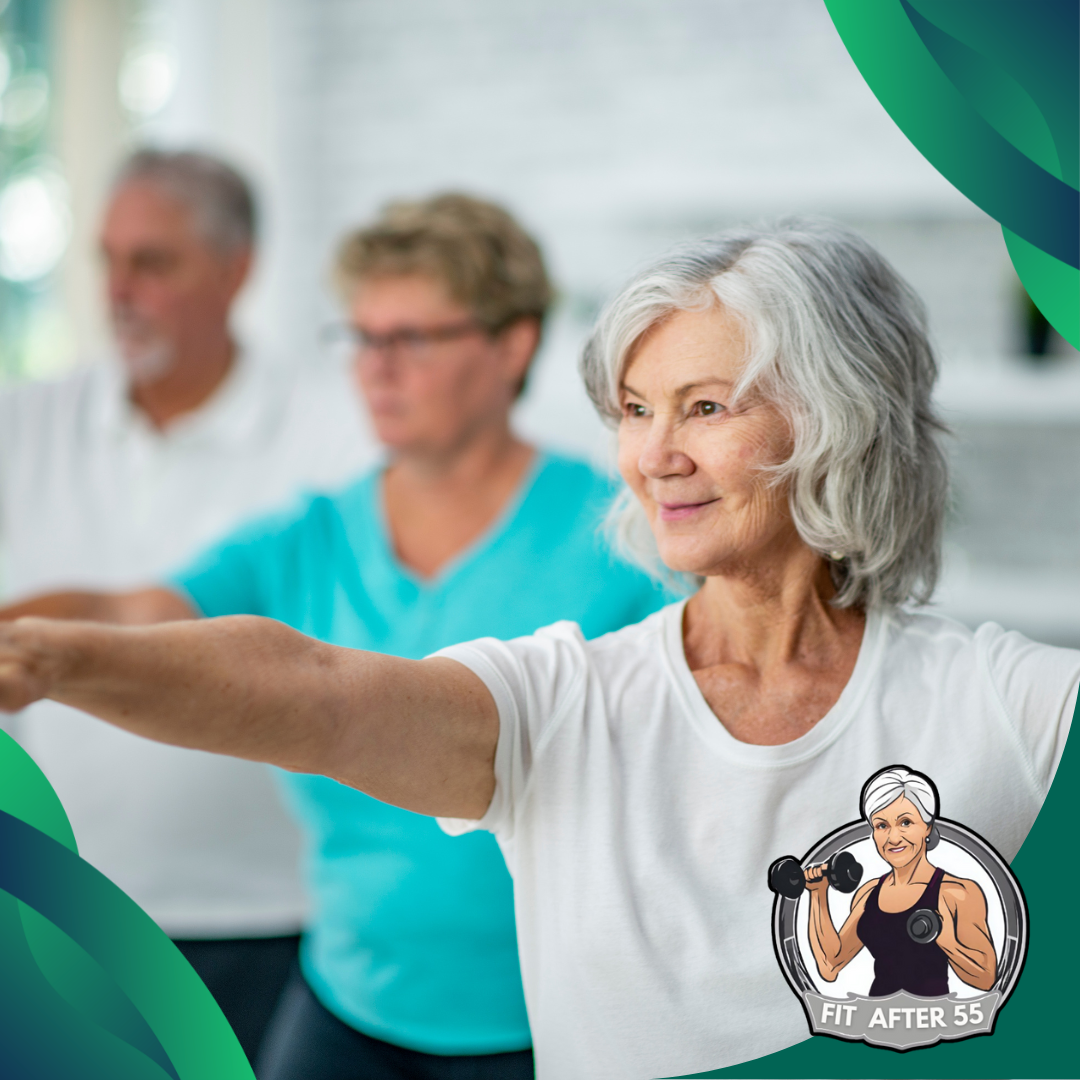
Improve Your Range of Motion
Flexibility isn’t just for yoga enthusiasts. Tai Chi’s gentle stretches can help keep joints limber and muscles relaxed. Over time, this can alleviate stiffness and improve your range of motion, making daily tasks easier and less painful. It’s like oiling the gears so everything runs smoother. Cardio health often takes a hit as we age, but Tai Chi offers a low-impact way to keep the heart pumping.
The continuous flow of movements gets the blood flowing without stressing the cardiovascular system. Studies have shown that regular Tai Chi practice can lower blood pressure and improve overall heart health. It’s a heart-friendly workout packed into a calm, soothing practice.
Stress Relief Through Tai Chi
Stress relief is another major perk of Tai Chi. The combination of deep breathing and mindful movements can significantly reduce anxiety levels. Focusing on the present moment can quiet the mental chatter, resulting in a calmer, clearer mind. This mental clarity can be beneficial for managing stress and promoting overall mental well-being.
Let’s not forget the boost to mental health. Engaging in Tai Chi has been linked to mood and cognitive function improvements. The meditative aspect encourages mindfulness, which can alleviate symptoms of depression and improve focus. When you feel mentally sharp, you’re more equipped to enjoy life and tackle its challenges with a positive mindset.
Here’s a video about the benefits of Tai Chi.
By: Center Life Balance
Getting Started with Tai Chi: Tips for Older Beginners
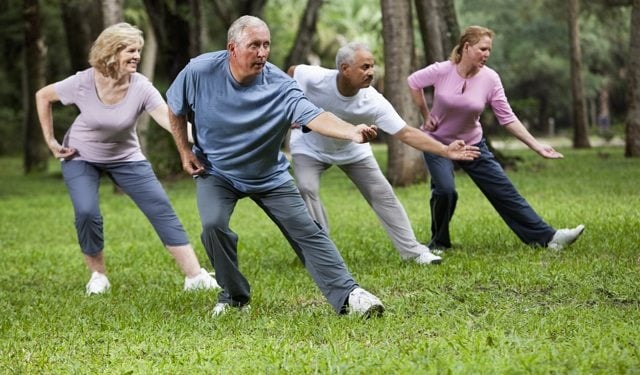
Starting anything new can feel daunting, but Tai Chi is incredibly accessible. First things first, choose a Tai Chi style that suits you. There are many styles, each with its focus and benefits. Some emphasize slow, flowing movements perfect for relaxation, while others have a bit more of a martial arts vibe. You don’t need to know everything immediately; pick one that feels right and go with it.
Incorporating Tai Chi into Daily Life
Incorporating Tai Chi into daily life can be as simple as setting aside 10-15 minutes daily for practice. It doesn’t have to be a major time commitment. Think of it as a daily ritual—just like brushing your teeth. A consistent routine helps form a habit, making it easier to stay committed. Finding a qualified instructor is essential. Look for someone experienced in working with seniors.
A good instructor can adapt movements to suit your needs, ensuring you get the most out of each session while keeping it safe and enjoyable. Many community and senior centers offer Tai Chi classes tailored to older adults—check those out. Practice at your own pace. One of the greatest things about Tai Chi is that you set the speed. There’s no rush, no pressure to keep up with others. Listen to your body and take it as slow as you need to. With time, you’ll find your rhythm and flow.
Online Resources Can Be a Great Help
Online resources can help if you need more time to be ready to join a class. There are numerous videos and tutorials available specifically designed for beginners and seniors. They can guide you through the basics from the comfort of your home. Just be sure to choose reputable sources to ensure the information is accurate.
Staying patient is key. Progress might take time, but with consistent practice, you will improve. Celebrate small victories and enjoy the journey. Remember, Tai Chi is not just about achieving perfect form; it’s about the process and the benefits it brings to your life.
Understanding and Performing Fundamental Tai Chi Movements
Getting the hang of Tai Chi starts with mastering the basic movements. Key postures like the ‘Commencement,’ ‘Repulse Monkey,’ and ‘Wave Hands Like Clouds’ are great starting points. These names sound a bit whimsical but trust me, they’re fundamental to building a strong foundation. Each move is deliberate and has a purpose—quality, not speed.
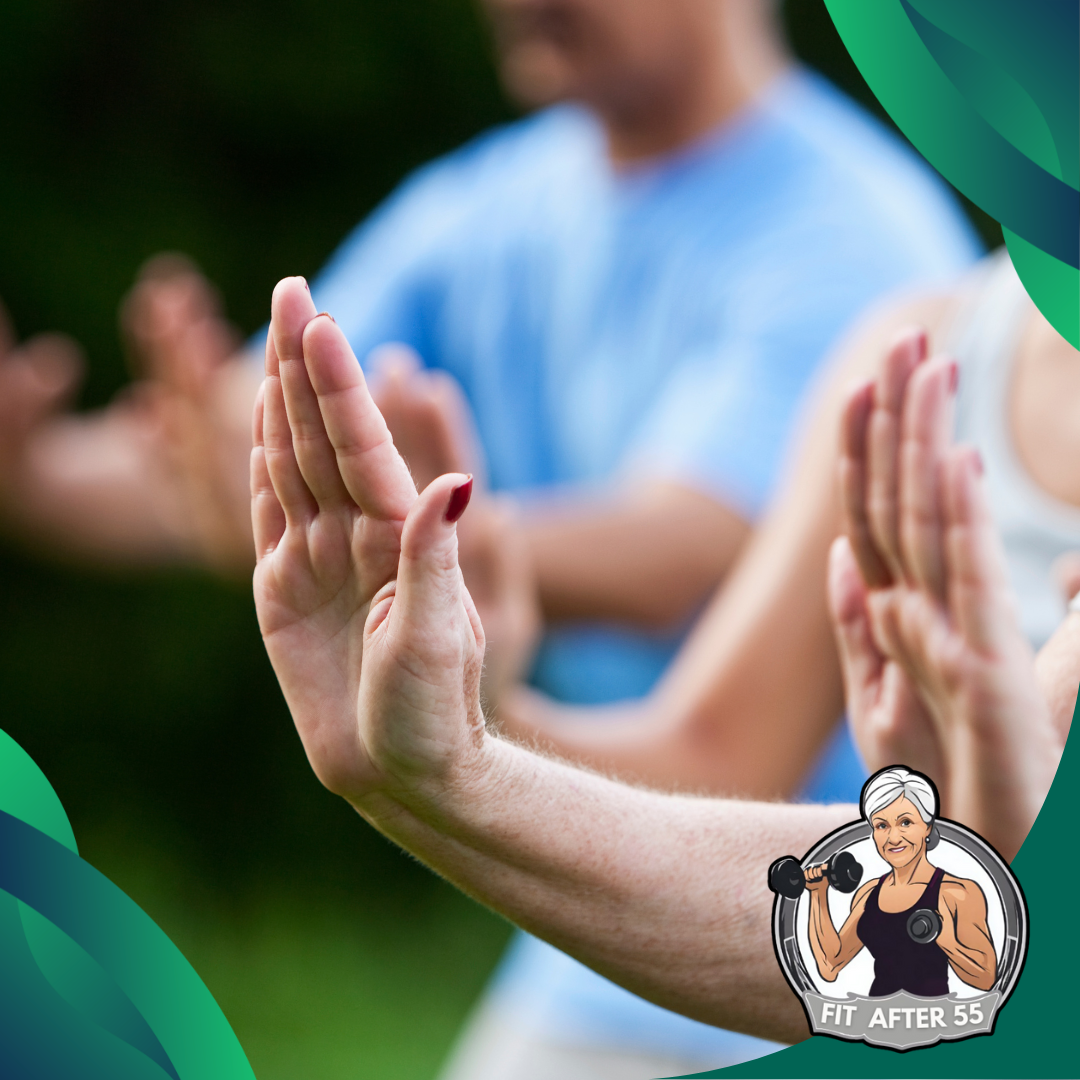
Breathing Techniques
Breathing techniques play a crucial role. Focusing on your breath helps to synchronize it with your movements, creating a sense of harmony and flow. Inhale deeply through the nose and exhale slowly through the mouth. This not only enhances the physical benefits but also calms the mind, helping you stay centered and focused.
Don’t worry if you can’t do every movement perfectly right away. Tai Chi is all about gradual improvement. If you have limited mobility, there are ways to modify the exercises. For example, movements can be done from a seated position if standing is too challenging. It’s about finding what works best for you.
Visualization Can Also Be a Helpful Too
Visualization can also be a helpful tool. Imagine you’re moving through the water, feeling the resistance and flow. This mental image can help guide your movements, making them more fluid and intentional. Over time, this approach can enhance your practice, making each session more effective. Regular practice is key to ingraining these fundamentals. Set aside time each day to go through your routine, even just a few minutes.
Consistency will help you internalize the movements, making them second nature. Connecting with your body is a big part of Tai Chi. Pay attention to how each movement feels and make adjustments as needed. This kind of mindfulness transforms Tai Chi from just another exercise into a deeply personal experience. It’s not just about moving your body; it’s about connecting with yourself.
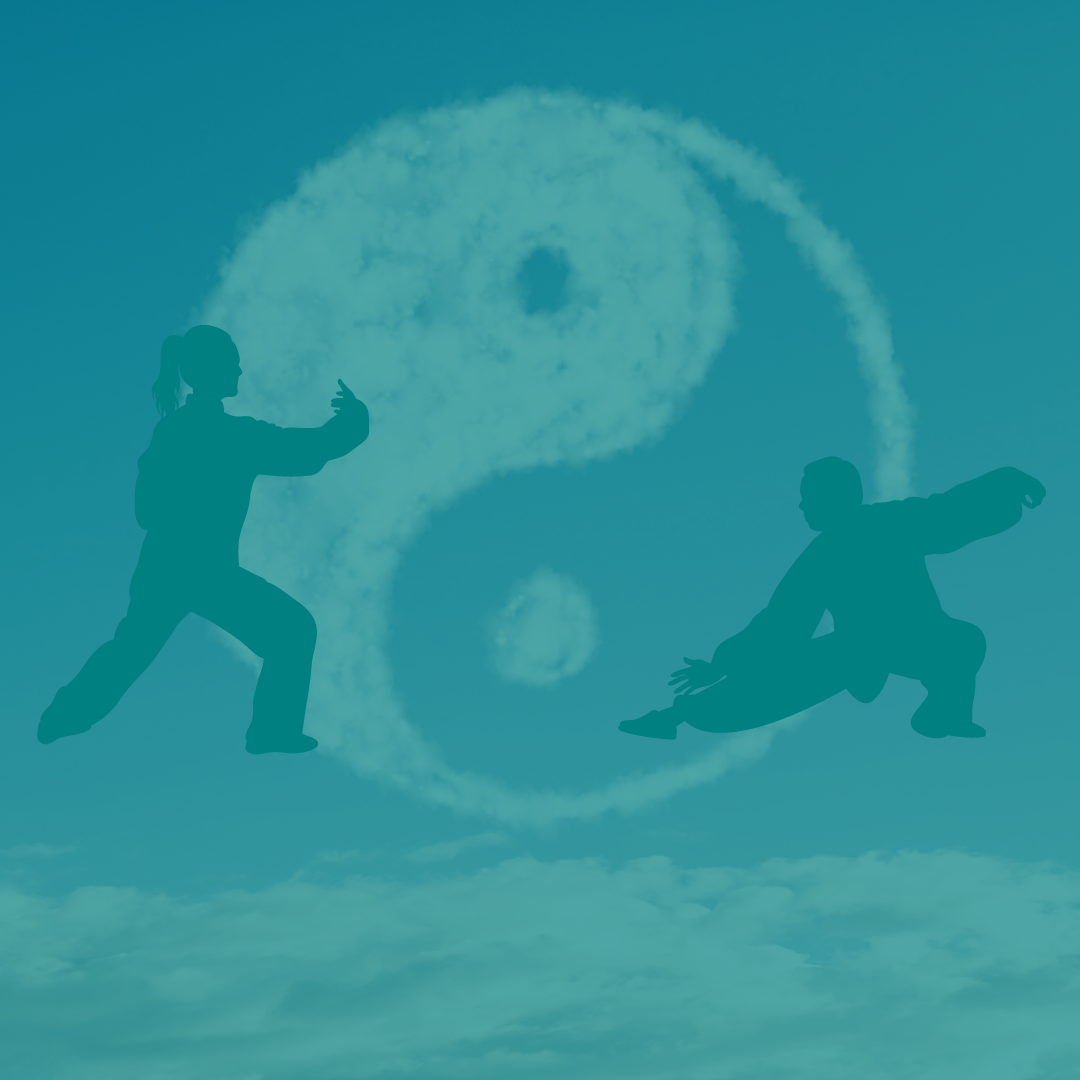
Did you Know?
Tai Chi can improve cardiovascular health and reduce the risk of falls. It’s an accessible, low-impact exercise that adapts to your pace, making it ideal for maintaining overall well-being as you age.
Here’s a video about Tai Chi.
By: Master Daniel Lee – Tai Chi & Qigong
Overcoming Common Challenges Faced by Seniors in Tai Chi
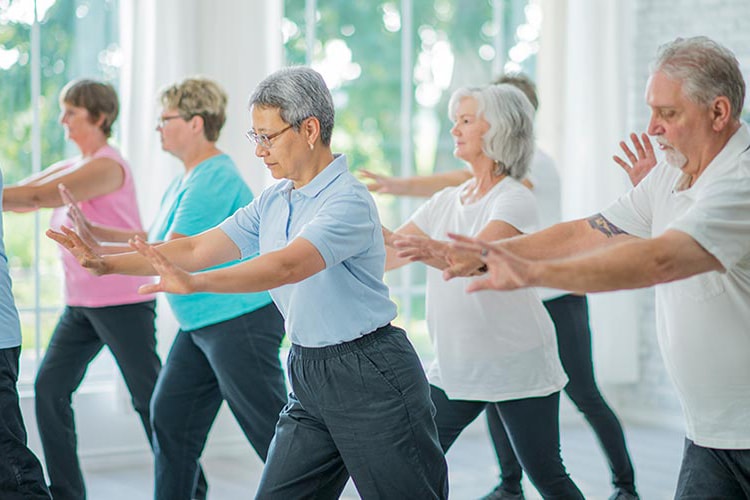
Maintaining motivation can be tough, especially when progress feels slow. To keep motivated, set small, achievable goals. Maybe aim to learn a new move every week or practice for a few minutes daily. These bite-sized targets make the overall journey less overwhelming and more enjoyable.
Physical limitations are a reality for most of us as we age, but they don’t have to be barriers. If you experience pain or discomfort, don’t push through it. Adapt the movements to your comfort level. Some modifications involve performing moves while seated or using a chair for balance. It’s about working with your body, not against it.
Consistency
Consistency can be a hurdle due to life’s unpredictability. Building a routine can help. Integrate Tai Chi into your daily schedule at a time that works best for you. Pairing it with another daily habit, like morning coffee or an evening walk, can make it easier to stick with.
Checking in with a healthcare provider before starting Tai Chi can provide peace of mind and ensure you practice safely. They can offer advice tailored to your specific health conditions, helping you avoid movements that might exacerbate any issues.
Preventing Injury is Crucial
Preventing injury is crucial. Always warm up with gentle stretching before diving into your Tai Chi routine. Slow down or consult a professional if you’re unsure about a movement. Proper form is essential to avoid strains and sprains.
End each practice session with a few moments of reflection. How did it feel? What did you enjoy? What felt challenging? This self-assessment can guide your future sessions, helping you focus on areas that need improvement and celebrate those where you excel.
The Social Aspect of Tai Chi: Building Community and Support
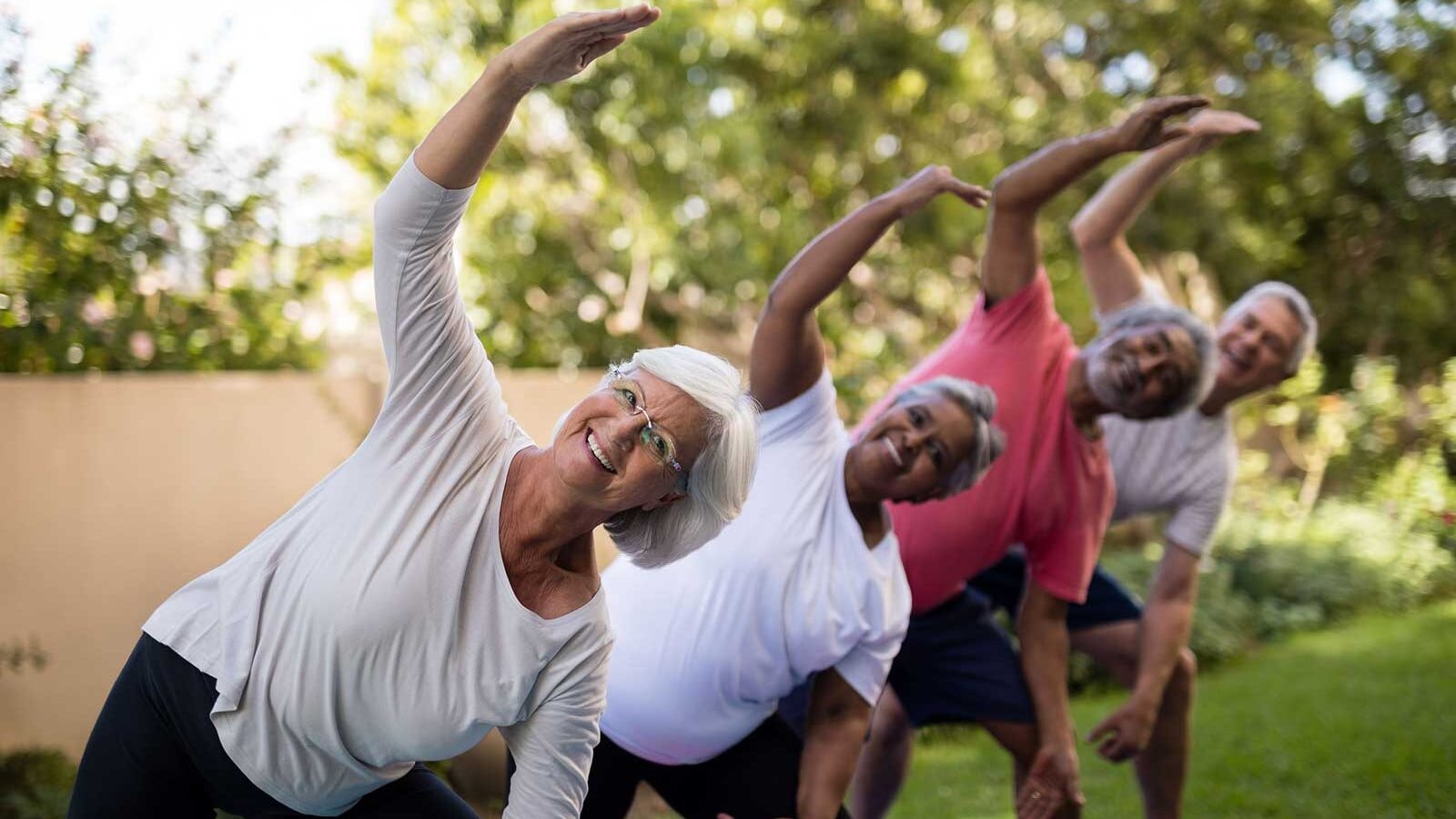
Practicing Tai Chi isn’t just a solo endeavor; it can be a fantastic way to connect with others. Joining a Tai Chi group or class can provide a sense of community and support. Sharing the experience with others motivates you and makes the journey more enjoyable.
Groups offer the benefit of peer support. When you’re around like-minded individuals who share your goals, it creates a nurturing environment. Whether struggling with a particular move or celebrating a milestone, having people to share these moments with can make a big difference.
Tai Chi Events
Participating in local Tai Chi events can also enhance your practice. Workshops, demonstrations, and community meet-ups expose you to different styles and techniques, enriching your experience. Plus, it’s a great way to meet new friends who share your interests. Online communities are another excellent resource. Virtual classes and forums allow you to connect with practitioners worldwide. You can exchange tips, discuss challenges, and celebrate successes, all from the comfort of your home.
Involvement in a Tai Chi community adds structure to your practice. Scheduled classes or group meet-ups can help keep you accountable and ensure you practice regularly. It’s not just about learning Tai Chi; it’s about being part of something bigger. Being part of a community also offers emotional benefits. Your peers’ encouragement and positive reinforcement can boost your confidence and make the practice more fulfilling.
It’s amazing how a simple “You’re doing great” can lift your spirits. Remember to underestimate the power of shared experiences. Watching others improve and share their successes can be incredibly inspiring. It reinforces the idea that you’re on this journey together, making each step more meaningful and rewarding.
Nurturing a Lifelong Tai Chi Practice for Long-Term Well-being
Setting long-term goals can keep your Tai Chi practice fresh and engaging. Consider where you want to be in six months, a year, or five years—whether mastering a form or improving balance. Tangible milestones provide motivation and excitement. Tracking progress in a Tai Chi journal can reveal patterns and improvements over time.
As you gain experience, exploring advanced techniques can add depth to your practice and keep it dynamic. Tai Chi also fosters self-discovery, offering insights into your strengths and growth areas. Consistency is key; even short sessions can reinforce habits and yield benefits. Sharing your practice with others can enhance your experience and spread Tai Chi’s benefits. Embrace Tai Chi as a lifelong journey that will evolve with you and enrich your daily life.
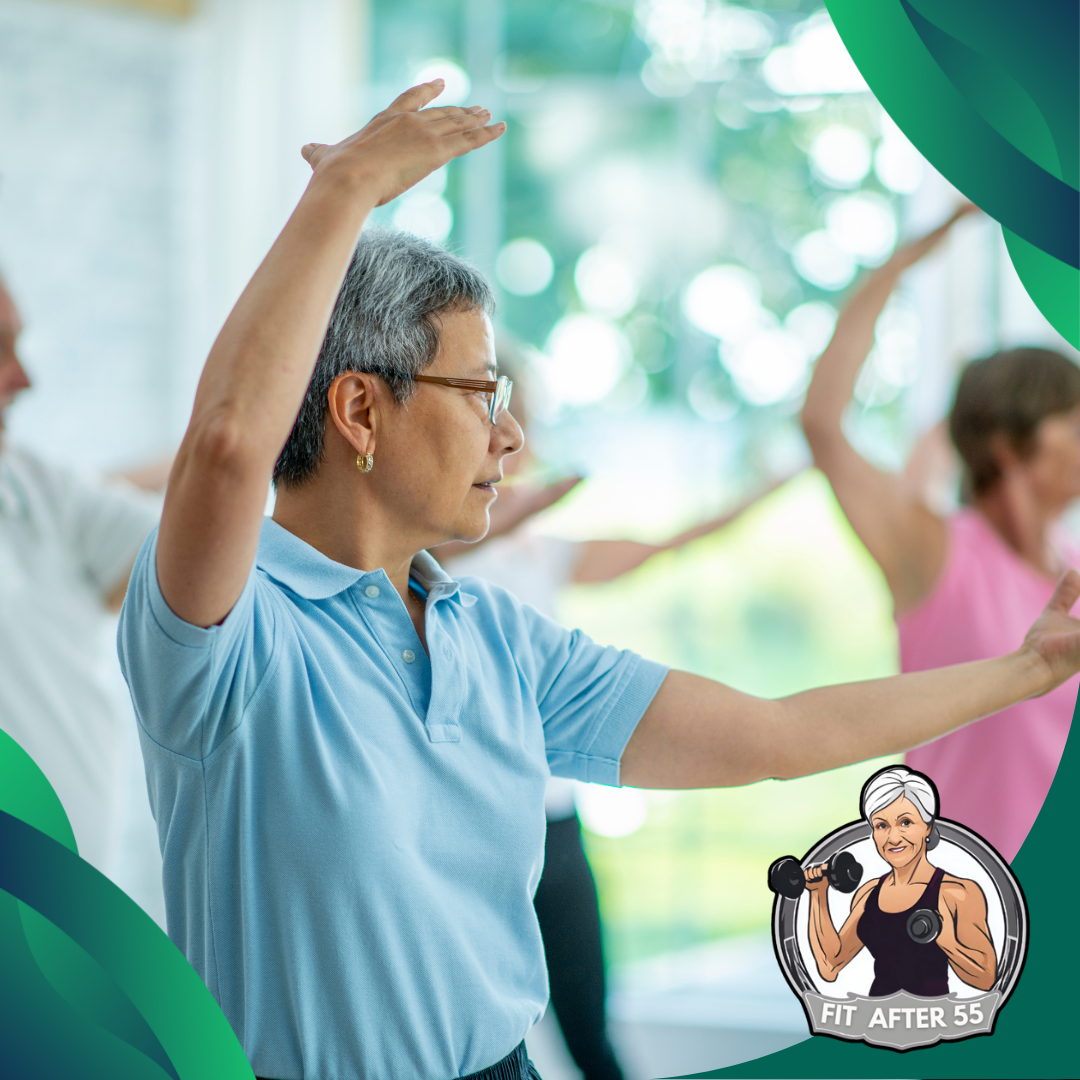
Embracing Tai Chi: A Path to Lifelong Well-Being for Seniors
In conclusion, Tai Chi for seniors offers a gentle yet effective way to enhance overall well-being. Its slow, deliberate movements are designed to improve balance, flexibility, and cardiovascular health while relieving stress through mindfulness. The practice is adaptable to various fitness levels, requiring no special equipment, making it an accessible and beneficial exercise for older adults.
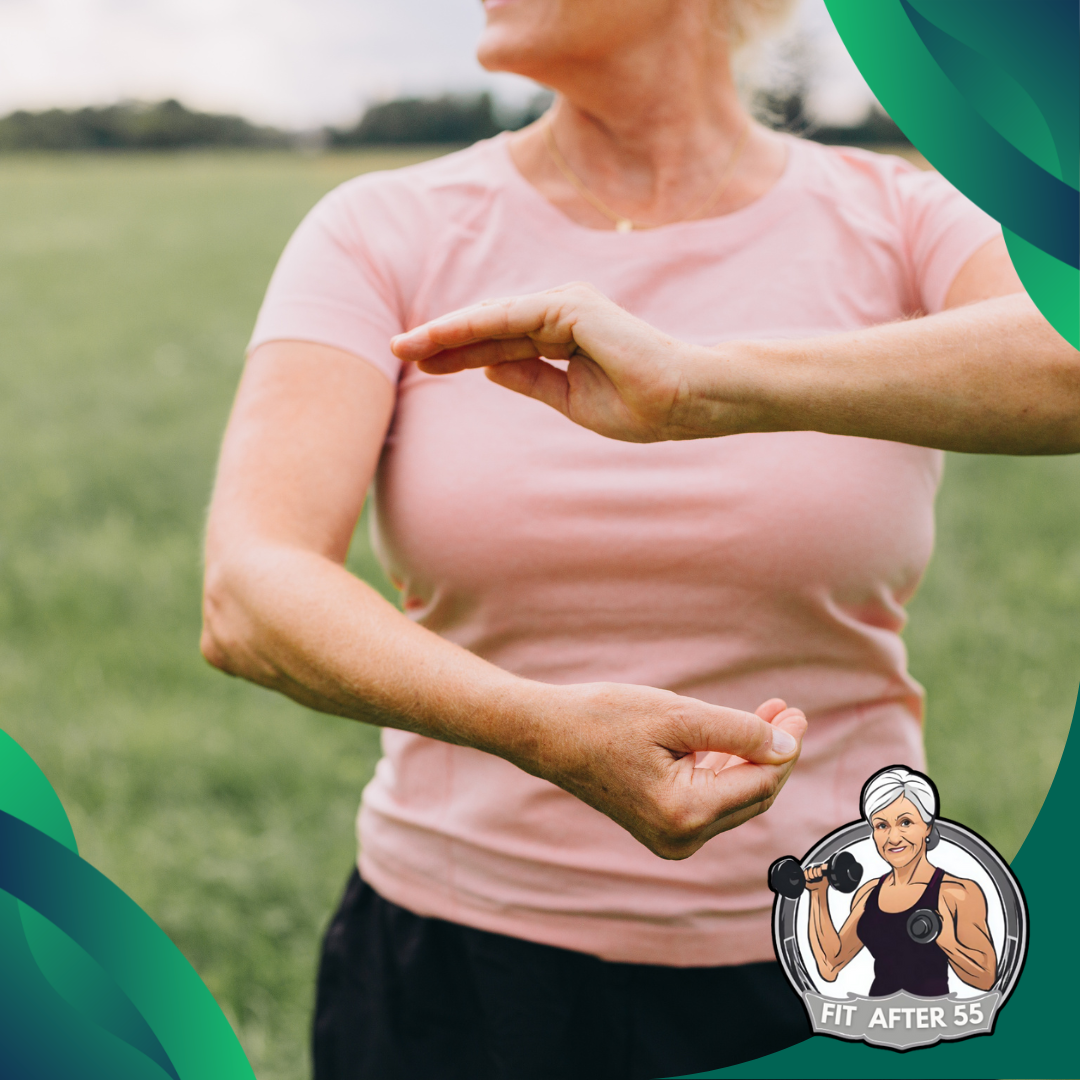
Incorporating Tai Chi into daily life is straightforward and rewarding. Setting aside just a few minutes daily can create a consistent routine that enriches physical and mental health. Whether practiced alone or in a group, Tai Chi fosters community and support, helping you stay motivated and engaged with your wellness journey.
Embracing Tai Chi as a lifelong practice can significantly enhance your quality of life. Setting long-term goals, tracking progress, and exploring advanced techniques keep the practice dynamic and fulfilling. Tai Chi promotes physical vitality and encourages personal growth and self-discovery, making it a valuable addition to your daily routine and a powerful tool for graceful aging.
FAQS
What Are the Primary Benefits of Tai Chi for Seniors?
Tai Chi offers several key benefits for seniors, including improved balance, flexibility, and cardiovascular health. It helps reduce the risk of falls by enhancing stability and coordination. Additionally, the practice promotes stress relief and mental clarity through mindful movements and deep breathing. Tai Chi’s low-impact nature suits seniors with varying fitness levels.
How Can Seniors Get Started With Tai Chi?
Seniors can begin Tai Chi with simple, beginner-friendly classes or online tutorials for older adults. Choosing a style that matches your pace and comfort level is essential. Many community and senior centers offer Tai Chi classes tailored to older adults. Wearing comfortable clothing and setting aside a few minutes daily for practice help establish a routine.
Are There Any Specific Precautions Seniors Should Take When Practicing Tai Chi?
Seniors should consult a healthcare provider before starting Tai Chi, especially if they have existing health conditions. Listening to your body and avoiding pushing through pain or discomfort is important. Begin with gentle movements and gradually progress to more advanced techniques. Proper warm-up and cool-down exercises and maintaining good form are crucial for preventing injuries.
Joins Us and Embrace Wellness!
Join the Fit After 55 Community! and get inspired to stay active.
Visit our website here for expert tips, valuable insights, and reviews tailored for seniors. Connect with our supportive health and fitness community on our Facebook page.
Let’s start this fitness journey together and show that age is just a number!

